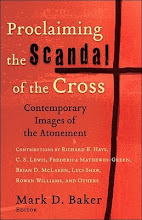
After the Sabbath, as the first day of the week was dawning, Mary Magdalene and the other Mary went to see the tomb. And suddenly there was a great earthquake; for an angel of the Lord, descending from heaven, came and rolled back the stone and sat on it. His appearance was like lightning, and his clothing white as snow. For fear of him the guards shook and became like dead men. But the angel said to the women, “Do not be afraid; I know that you are looking for Jesus who was crucified. He is not here; for he has been raised, as he said. Come, see the place where he lay. Then go quickly and tell his disciples, ‘He has been raised from the dead, and indeed he is going ahead of you to Galilee; there you will see him.’ This is my message for you.” So they left the tomb quickly with fear and great joy, and ran to tell his disciples. Suddenly Jesus met them and said, “Greetings!” And they came to him, took hold of his feet, and worshipped him. Then Jesus said to them, “Do not be afraid; go and tell my brothers to go to Galilee; there they will see me.” (Matthew 28:1-10)
For if we have been united with him in a death like his, we will certainly be united with him in a resurrection like his. We know that our old self was crucified with him so that the body of sin might be destroyed, and we might no longer be enslaved to sin. For whoever has died is freed from sin. But if we have died with Christ, we believe that we will also live with him. We know that Christ, being raised from the dead, will never die again; death no longer has dominion over him. The death he died, he died to sin, once for all; but the life he lives, he lives to God. So you also must consider yourselves dead to sin and alive to God in Christ Jesus. (Romans 6:5-11)
When Christians celebrate Easter, it is typically joyous. The dark coverings of Good Friday are drawn back, the windows are opened, the bright flowers are produced, and the songs of joy are sung. There is no more need for sadness and grief; he is risen, and all will be well.
The first friends of Jesus, however, did not experience joy until later. Initially, fear and disbelief dominated them—Jesus twice tells them, “Do not be afraid.” The guards at the tomb were terrified to the point of catatonia; t is likely that they later exhibited the signs of PTSD. In Luke’s account of the Resurrection, the male disciples don’t believe the story that the women tell about the empty tomb and the angels. They thought it was “an idle tale” (Luke 24:11). Their own gender prejudices might have made the women’s report suspect to them. They found it hard to believe.
It would be interesting to celebrate Easter in a cemetery. One particular tomb could be arranged ahead of time with the doors thrown open and a coffin smashed to bits, the corpse nowhere to be seen. People dressed like angels could leap out from behind gravestones and trees, scaring the pants off everyone by yelling, “He is risen!” Then everyone could gather together and be allowed to share all their doubts about faith and God. Starting an Easter celebration with fear and doubt might align us with the experiences of the first disciples; it might also create a new kind of space for Jesus to appear and show that he is truly alive.
It was only long after the events of the Resurrection that some theological interpretation started to emerge. People like the Apostle Paul looked deeply into the life of Israel, reflected on the story of Jesus, and realized that something cosmic and global was happening as a result of the local event of Jesus’ resurrection. This was a story for all people, and human lives were being drawn into the death and resurrection of Jesus. Jesus, who had been condemned by the power of sin, and then snuffed out by the power of death, now stood victorious over both those dark forces. When we trust our lives to Jesus, his story becomes ours; Paul says that we, too, are now freed from the dominance of both sin and death.
A story that launches in fear and disbelief, in a dusty spot in a faraway place, becomes a story of joy and hope, a story for people in all places at all times. Even for those who are still troubled by fear, Jesus comes and urges, “Do not be afraid.” For those who struggle with disbelief, he reaches out and cries, “Greetings!”
He is risen. He is risen indeed!























No comments:
Post a Comment